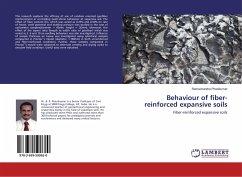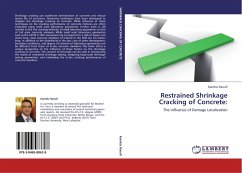
Study of Shrinkage of Wool, Chlorinated Wool and Cashmere Fibres
Versandkostenfrei!
Versandfertig in 6-10 Tagen
16,99 €
inkl. MwSt.

PAYBACK Punkte
8 °P sammeln!
Wool fibres are prone to severe shrinkage caused by mechanical forces during various finishing and dyeing processes. This is mainly the consequence of clinging and entanglement of cuticles on the surface of wool fibres. Cashmere is a revered kind of fine fibre among different types of wool and is subject to shrinkage after dyeing process as well. It is believed that cashmere fibre with less rough scales on its surface should encounter much less shrinkage. This work tries to study the shrinkage properties of cashmere fibre after dyeing with different dyes. Raw wool fibres and chlorinated wool f...
Wool fibres are prone to severe shrinkage caused by mechanical forces during various finishing and dyeing processes. This is mainly the consequence of clinging and entanglement of cuticles on the surface of wool fibres. Cashmere is a revered kind of fine fibre among different types of wool and is subject to shrinkage after dyeing process as well. It is believed that cashmere fibre with less rough scales on its surface should encounter much less shrinkage. This work tries to study the shrinkage properties of cashmere fibre after dyeing with different dyes. Raw wool fibres and chlorinated wool fibres of counts 60s, 70s and 80s are dyed. Four different dyes are used in the dyeing process, Telon dye (acid leveling dye), Supralan dye (1:2 metal complex dye), Isolan dye (1:2 metal complex dye) and Realan dye (reactive dye). Dyeing at colour depths of 0.1%, 1%, 5% on weight of fibre (o.w.f.) was carried out in the experiments.












